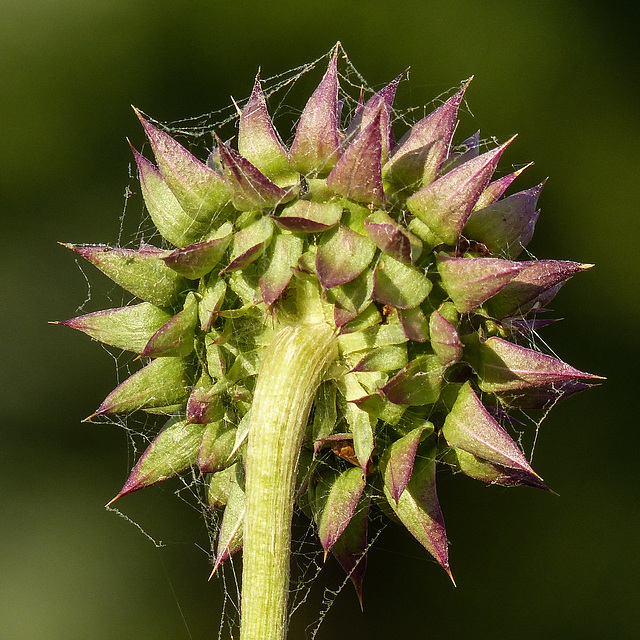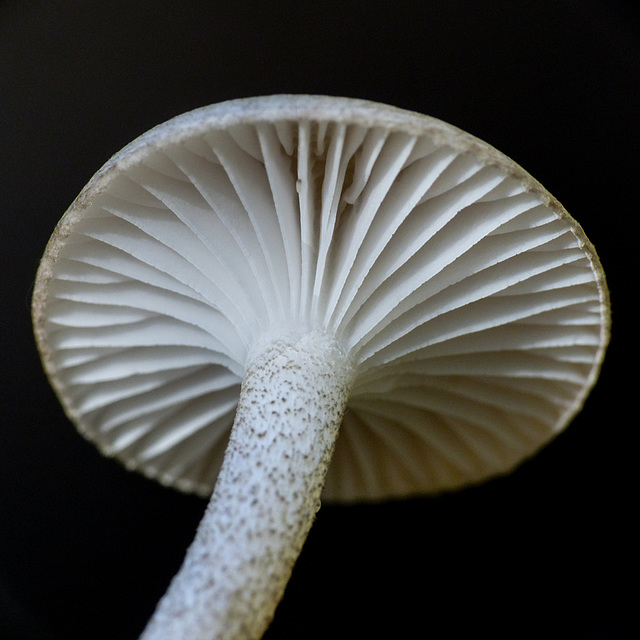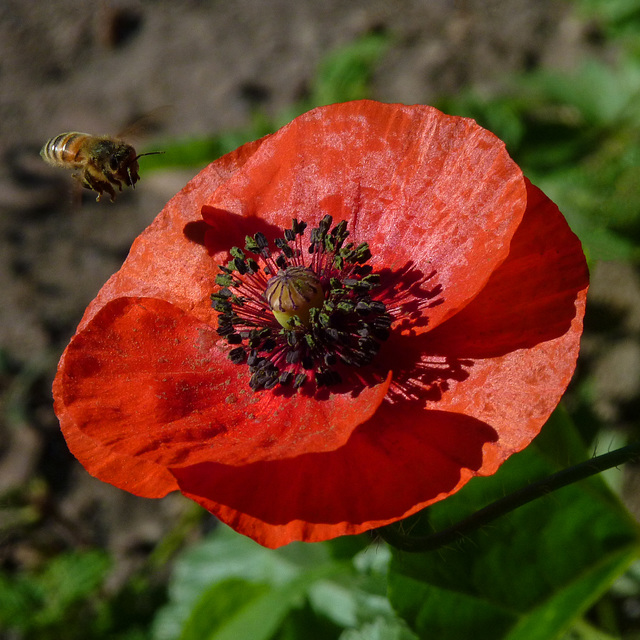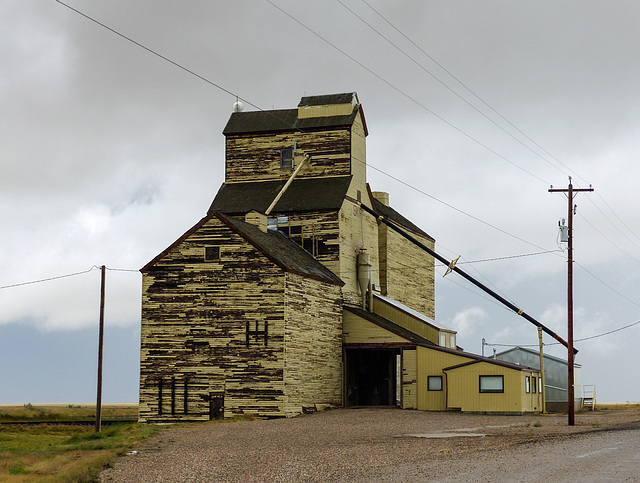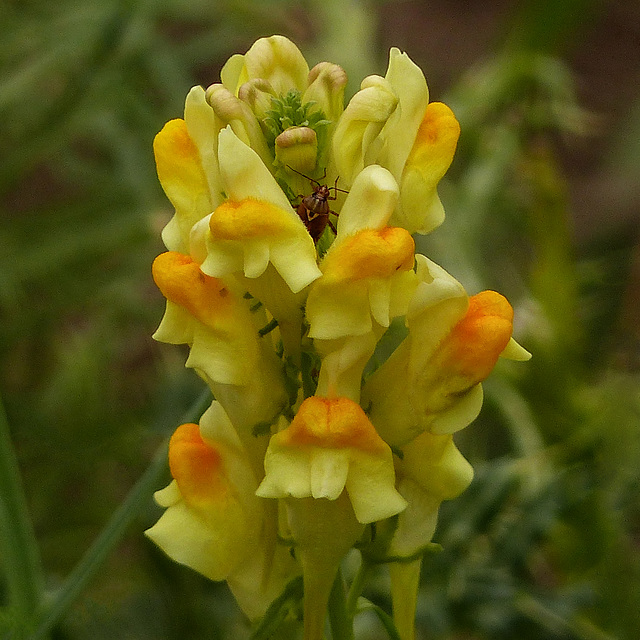
Explore photos and posters, Flickr
28 Aug 2014
Young Burrowing Owl
There are 38 images in my Burrowing Owl album, but this photo shows one of the two first and only Burrowing Owls that I have ever been fortunate enough to see in the wild. To say that it was a thrill is an understatement! These endangered owls are tiny and so difficult to see, especially when they are down in the grasses, or in this case, against the stubble in the field. They are a true delight when, or if, they are seen on a fence post, so that the whole of the bird can be seen, not just a pair of bright yellow eyes peering out between the blades of grass. We saw two different individuals, possibly three, one of them this juvenile. Most of the time, though, they were mainly hidden in the grass, so most of my photos tend to be of "eyes". Such a great pity that this is an endangered species!
"As a result of its ENDANGERED Species status in 1995, the Burrowing Owl has the focus of a variety of conservation efforts. Operation Burrowing Owl and other projects involving habitat preservation with landowners have been created. Populations are monitored by Fish and Wildlife departments. They have been reintroduced into the British Columbia interior, where it was extirpated. Outlook would improve if larger areas of habitat were preserved and harmful pesticides were banned in all areas of their range. Numbers could increase if an increased tolerance to burrowing mammals develops (i.e. badgers) – provides homes for the Burrowing Owl. Outlook: perilous." From burrowingowl.com.
en.wikipedia.org/wiki/Burrowing_owl
During three days away (26, 27 and 28 August 2014) with friends Cathy and Terry, we saw so many things, including breathtaking scenery, 4 Black Bears (including one that was swimming in the lake), Bison, Deer (including several that we saw in the town of Waterton, where we stayed for two nights at the clean and friendly Bear Mountain Motel), Golden-mantled Ground Squirrels, Chipmunks, various bird species including these endangered Burrowing Owls (way east of Waterton, on our last day), a few wildflowers, several Yellow-bellied Marmots (a first for me!), a few different insect species, and a family of Dusky Grouse that are uncommon in the park. I even got the chance to see three or four new-to-me old, wooden grain elevators. Oh, and we got caught in a storm like nothing we'd ever seen before - a mesocyclone, apparently.
23 Jul 2014
The fancy web work of a spider
Perhaps I should whisper that this is my favourite Thistle, seeing as it is a weed : ) It is called Nodding Thistle, also Musk Thistle, and was introduced from Europe and North Africa. A member of the Aster family, it grows to 60-250 cm tall, with flower heads that are 1.5-8 cm across. This particular plant was growing on 23rd July 2014 at the Erlton/Roxboro Natural Area. It was past its prime, as the purple disc florets have died, but I am always fascinated with the spine-tipped, inner and outer bracts. This time that I went, the sun was in the wrong position to try and photograph the plants from the other side.
After a volunteer shift on that day, 23 July 2014, I wasn't too far away from the Erlton/Roxboro Natural Area, where I was finally going to go on a botany walk. Having been to this location several times before, I knew it was a short, easy, flat trail, and that I could go as far as I wanted and then turn back early, which is what I did. I've missed pretty well all the botany and birding walks the last few months, which is quite depressing. The main thing I wanted to see were these Nodding / Musk Thistles.
With a couple of hours to "kill" after my volunteer shift, I spent them at the Reader Rock Garden, which was just a few minutes' drive away from the evening botany walk at the Erlton/Roxboro Natural Area.
06 Sep 2014
1 comment
Just a little mushroom
With a weather forecast of rain and snow for the following two or three days, there were a couple of places that I thought I had better get to on Saturday, 6 September 2014. (Little did we all know that we were in for two days of heavy snowfall that has caused a huge amount of damage to thousands of trees and shrubs throughout the city.) The first place I wanted to get to was Brown-Lowery, to check if there were any mushrooms. I was there recently, and only found a couple of things.
On 6 September, it was a little more rewarding and I found several large clusters of tiny mushrooms growing on tree stumps or at the base of trees and various tiny mushrooms growing in the moss, including the small, white one in the macro shot above. Also found several patches of bright orange Coral Fungi. Quite a few people were in the park, so I felt safer going a very short way in. Far enough, as it turned out, to watch an adult and a juvenile Three-toed Woodpecker, feeding together on a tree trunk. The young one was copying Mom or Dad, but its soft squeaking sound resulted in the adult feeding it, too. This Woodpecker species seems to be reasonably tolerant of people. They are rare birds here, so I feel very lucky to have seen these two and any others in the past.
On the way home, I decided to call in at Fish Creek Park, hoping to find a Beaver or a Mink that a friend had told me about (thanks, Phil!). Though I did see a couple of Beavers, I wasn't able to get a decent photo of them. One of them was a huge animal - this was the one that was very recently found in a trap, biting off one of its front legs that was caught in the trap. Someone had been there when this was happening and she made several reports about it. Thanks, Linda, for doing this. Such a cruel way to deal with any Beaver problem! The now three-legged animal seems to be doing OK. I was luckier with the Mink, catching it in a couple of quick shots.
On the walk back to my car, I was lucky enough to see a distant doe and two fawns. Apparently, she had three young ones, so we were wondering if something had happened to one of them. Maybe a Coyote?
27 Aug 2010
Coming in to land
Posted mainly for a splash of bright colour, which I'm needing at the moment : ) Our weather has calmed down after our two days of severe snowstorm a few days ago. Yesterday, 13 September 2014, I finally got out for a drive. I hadn't been out of the house for a few days and was beginning to get cabin fever. Driving down my street, I finally got a look at just how much tree damage the late summer snowstorm (actually two storms, on 9 and 10 September) had caused. My street is lined with huge piles of cut-down branches, waiting for the city's machines to come and remove them.
My drive took me as far as Brown-Lowery Provincial Park, SW of the city, as I wanted to see how much snow was on the ground in the forest. From the muddy parking lot, I could see that the ground between the trees was covered with a lot of snow, hiding everything that might have been there, including wildflowers and mushrooms. It will take some time for all this sheltered snow cover to melt. I saw practically nothing during my drive, other than a Magpie, the Red-tailed Hawk that I'm posting today, horses and cows. Looks like we may have to wait till spring arrives next year before getting the chance to photograph much, if anything, other than snow photos. Many parks and natural areas are now closed because of the damage caused by the snowstorms. It's feeling rather like the situation last summer, when everywhere was closed for months because of the damage caused by the Alberta Flood of the Century.
This Poppy photo was taken way back on 27 August 2010, during a visit to the wonderful homestead and gardens belonging to the late Jim Coutts, near Nanton, Alberta. I used to look forward so much to our occasional visit, especially seeing Jim's beautiful Poppy gardens. Interesting to note that Jim used to be the former principal secretary of Prime Minister Pierre Trudeau.
28 Aug 2014
Skiff Elevator, after the storm
Skiff is a hamlet in southern Alberta. Before friends, Cathy and Terry, and I, set out on a three-day trip to Waterton Lakes National Park (26, 27 and 28 August 2014), I had discovered that we would be quite near to Skiff and its old grain elevator. I had mentioned this to my friends, asking if a quick stop to get a couple of shots might be possible if we had time. However, little did we know that we would end up having to stop in Skiff anyway, as Skiff was the closest place for us to get to after we got caught in a severe storm. We stopped at some kind of machinery warehouse to ask something and one of the workers said that he had never seen a storm like this one! A couple of minutes away, we found the beautiful, old elevator. You could still feel the tail end of the storm, with very strong winds blowing, barely letting me open my car door and walk with great difficulty to get my photos. I was surprised that my photos came out at all, I was being blown so much off balance.
The weather forecast that I saw before we left Calgary said that we were in for three beautiful days of sunshine. So, luck was on our side, giving us warm, sunny days - until the BIG STORM hit! We had driven eastwards from Waterton, hoping to see Yellow-bellied Marmots and, if we were really lucky, a Burrowing Owl. The storm was approaching very fast, around 5:00 p.m. just before we started our return trip to Calgary. It was like nothing I had ever seen before - a menacing cloud that was travelling fast and furious. I have recently posted a couple of photos of the storm. Despite trying our best to get away from it, it eventually engulfed our car, surrounding us with more or less zero visibility, pounding hail, thunder and lightning, and tremendously strong winds. There was nothing to do but sit tight in the car, hoping that the hail would not break the car windows and that this severe thunderstorm would not develop into a tornado! This storm was very scary, but at the same time, "exciting" (only because all turned out OK in the end!). Fortunately, we weren't caught in the very centre of it. Our road trip sure went out with a bang! Later, I contacted the Alberta Tornado Watch and posted a photo for them to see. They said the storm that happened that day was a mesocyclone.
This elevator is the sole remaining elevator in Skiff and, though now wearing Parrish & Heimbecker colours, may well have been an Alberta Wheat Pool elevator originally. If so, it was built in 1929 with a 40,000 bushel capacity. The annexes were added in 1948 (East) and in 1952 (West). The larger one is on the east side. The elevator appears to still be in use. There is very little information online about it, unfortunately.
www.waymarking.com/waymarks/WMKTFF_Alberta_Wheat_Pool_1_S...
14 Sep 2014
Quick march
Almost on the spur of the moment, I decided to join friends yesterday afternoon for a birding walk. The weather was so perfect, especially compared to the two consecutive snowstorms we had on Tuesday and Wednesday of last week, that damaged thousands of trees in the city! After a quick look for birds along the avenue of trees near Fish Creek Provincial Park headquarters, we drove down to the Boat Launch area and from there we walked south along the Bow River. The Ospreys were flying near the river ad we saw one of them carrying a fish to take back to their nest. We saw 30 bird species, but nothing close enough for photos. After an enjoyable walk, a few of us called in at Tim Horton's for coffee and a snack.
From there, I called in at a different part of the park and watched a family of Beavers swimming in their pond. While I was waiting, hoping that they might appear, so many American Robins flew from branch to branch in the nearby trees and bushes, sometimes landing, like this colourful male, on the rocks at the edge of the pond. I always feel that Robins are so much taken for granted. Eventually, after a long wait, the Beaver's appeared - this adult, who crossed the path where I was standing, took me off guard, as I had my camera well zoomed. This huge animal walked faster than I was expecting, so it's not the greatest photo. Better than almost all my photos taken of them yesterday, though, as the light was quickly fading and the pond area was too dark. Hope your photos came out much better than mine, Phil! Such a treat to watch this family, especially the young ones. We were amazed, at one moment, when an old wooden pallet started moving in the pond and blocked a small passageway between the banks. One Beaver was pulling this discarded structure all on its own. I wonder if they had originally found it washed up nearby, after the Alberta Flood of the Century last year (2013).
en.wikipedia.org/wiki/North_American_beaver
02 Sep 2014
Butter-&-eggs
Just an ordinary shot of this invasive weed, but I loved seeing the tiny bug (Tarnished Plant Bug?) hiding in its bright and cheery surroundings. I always enjoy seeing the heart-shaped marking on the "back" of these tiny, common insects. This photo was taken on 2 September 2014, when I was on a birding walk at Carburn Park. The parking lot at Carburn is closed to the public at the moment, while workers are constructing a "rain garden" or "water garden". It will be interesting to see what this is, when it's all finished.
Also known as Common Toadflax, this plant was introduced from Europe as a garden plant, but has now become an aggressive weed.
www.invasiveplants.ab.ca/Downloads/FS-CommonToadflax.pdf
14 Sep 2014
3 favorites
1 comment
Me and my shadow
Thanks to Frank Sinatra & Sammy Davis Jr, who sang the song that had this title (1927). Have to admit it was never (i.e. many years later) "my" kind of music : ) However, that title came to mind when I saw this shot.
Almost on the spur of the moment, I decided to join friends yesterday afternoon for a birding walk. The weather was so perfect, especially compared to the two consecutive snowstorms we had on Tuesday and Wednesday of last week! After a quick look for birds along the avenue of trees near Fish Creek Provincial Park headquarters, we drove down to the Boat Launch area and from there we walked south along the Bow River. The Ospreys were flying near the river ad we saw one of them carrying a fish to take back to their nest. We saw 30 species, but nothing close enough for photos. After an enjoyable walk, a few of us called in at Tim Horton's for coffee and a snack.
From there, I called in at a different part of the park and watched a family of Beavers swimming in their pond. While I was waiting, hoping that they might appear, so many American Robins flew from branch to branch in the nearby trees and bushes, sometimes landing, like this colourful male, on the rocks at the edge of the pond. I always feel that Robins are so much taken for granted. Eventually, after a long wait, the Beaver's appeared - one adult, who crossed the path where I was standing (photo posted today), who took me off guard as I had my camera well zoomed. This huge animal walked faster than I was expecting, so it's not the greatest photo. Better than almost all my photos taken of them, though, as the light was quickly fading and the pond area was too dark. Hope your photos came out much better than mine, Phil! Such a treat to watch this family, especially the young ones. We were amazed, at one moment, when an old wooden pallet started moving and blocked a small passageway between the banks. One Beaver was pulling this discarded structure all on its own. I wonder if they had originally found it washed up nearby after the Alberta Flood of the Century last year (2013).
27 Jul 2014
Garlic
This photo was taken on 27 July 2014, in a friend's back garden that is full of vegetables. I like seeing Garlic plants - both fascinating and quite beautiful. I wonder how much damage was caused to everything by the two snowstorms we had on 9 and 10 September. Or maybe my friends had already pulled most of the vegetables - hopefully.
"Its close relatives include the onion, shallot, leek, chive, and rakkyo. With a history of human use of over 7,000 years, garlic is native to central Asia, and has long been a staple in the Mediterranean region, as well as a frequent seasoning in Asia, Africa, and Europe. It was known to Ancient Egyptians, and has been used for both culinary and medicinal purposes.
Garlic is grown globally, but China is by far the largest producer of garlic, with approximately 10.5 million tonnes (23 billion pounds) grown annually, accounting for over 77% of world output. India (4.1%) and South Korea (2%) follow, with Egypt and Russia (1.6%) tied in fourth place and the United States (where garlic is grown in every state except for Alaska) in sixth place (1.4%).[17] This leaves 16% of global garlic production in countries that each produce less than 2% of global output. Much of the garlic production in the United States is centered in Gilroy, California, which calls itself the "garlic capital of the world"." From Wikipedia.
en.wikipedia.org/wiki/Garlic
Jump to top
RSS feed- Latest items - Subscribe to the latest items added to this album
- ipernity © 2007-2024
- Help & Contact
|
Club news
|
About ipernity
|
History |
ipernity Club & Prices |
Guide of good conduct
Donate | Group guidelines | Privacy policy | Terms of use | Statutes | In memoria -
Facebook
Twitter



